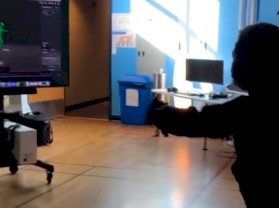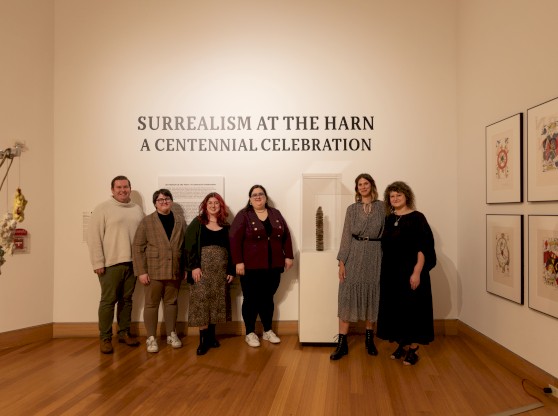Professor Nan Smith touched down in Israel in early January to lecture at a top art school in Israel, give a workshop at an art center and gather information for her research in global water conservation.
The UF Ceramics professor in the School of Art + Art History (SA+AH) lectured at the Bezalel Academy of Art and Design and presented a workshop at the Givat Haviva Art Center. She met with two science professors from Technion - Israel Institute of Technology in Haifa.
In her lecture, Smith discussed her art practice and the work she’s done as a sculptor. She focused on social narratives including topics of spirituality, feminine nostalgia, and most recently, the work on environmental conservation.
“I’m trying to gather information as an artist, talk to the experts, and then generate artwork based on (that) knowledge,” Smith said.
Israel’s status as a global leader in water conservation made it a perfect place for Smith to explore and research her topic of interest.
Assaf Schwartz, an ecologist, and Raphael Semiat, a desalination expert, informed Smith of the current surplus of water in Israel. Semiat showed Smith a small model of what a desalination filter looks like and explained how it cleans water. She learned the country pays for the water and cleans it so well they have an excess supply. They are able to help surrounding nations with their water needs.
While with Schwartz and Semiat, Smith asked questions about global changes and water politics. Schwartz and Semiat said the problem of water is one that each government needs to solve. They pointed out that there are borders to countries, but water still flows from one country to the other. For example, the creation of dams will impact other countries, or if an aquifer gets pumped, sometimes family wells go dry.
In the short time Smith had in the country, she also had a goal to take photos of the Israeli deserts and the Mediterranean coastline.
“I took photographs of desertscapes and areas of desertification and am juxtaposing them with natural water cycles and the wet-dry theme,” Smith said. She is doing this, she said, to talk about commodification of water; water in natural world opposed to man’s manipulation of water.
A professional guide took her out for a half day so she could take elevated shots of the Judaean Desert.
While Smith’s trip was impactful in many ways, it ultimately will impact her artwork. Her installation about water conservation is titled “Water Code Blue,” and features a sculpture along with a photographic mural. She is also working on large porcelain photo-montages created using photographic china paint decals.
Smith’s trip was funded by a Research Incentive Award, which provides funds to support faculty research. Allocated by a committee of their peers, faculty utilize these funds to help support a variety of research related activities, including: travel, materials, new equipment, specialized training to further their practice and much more.
See more of Smith’s work at www.nansmith.com.





